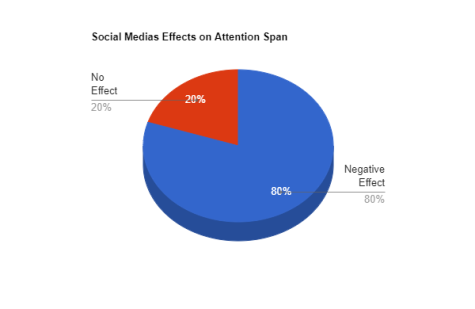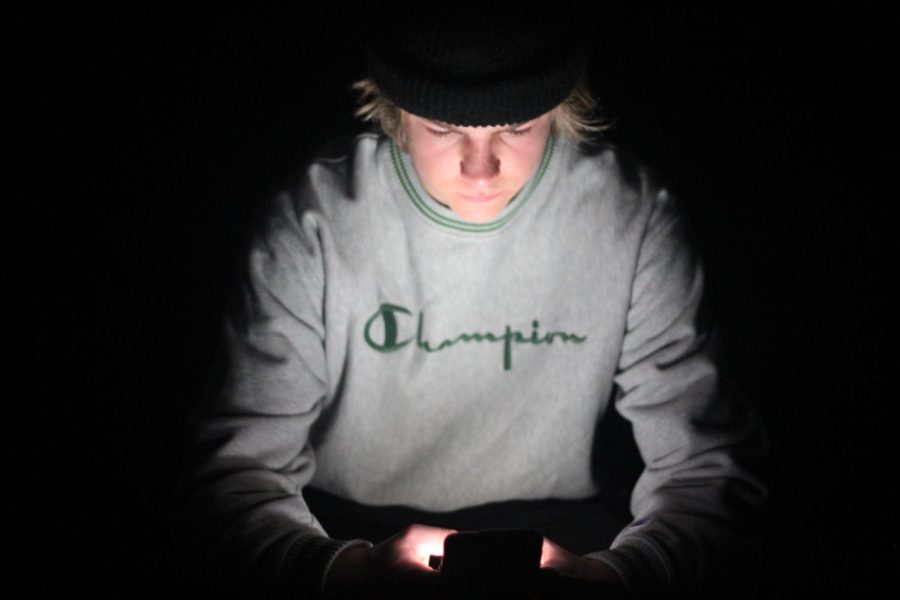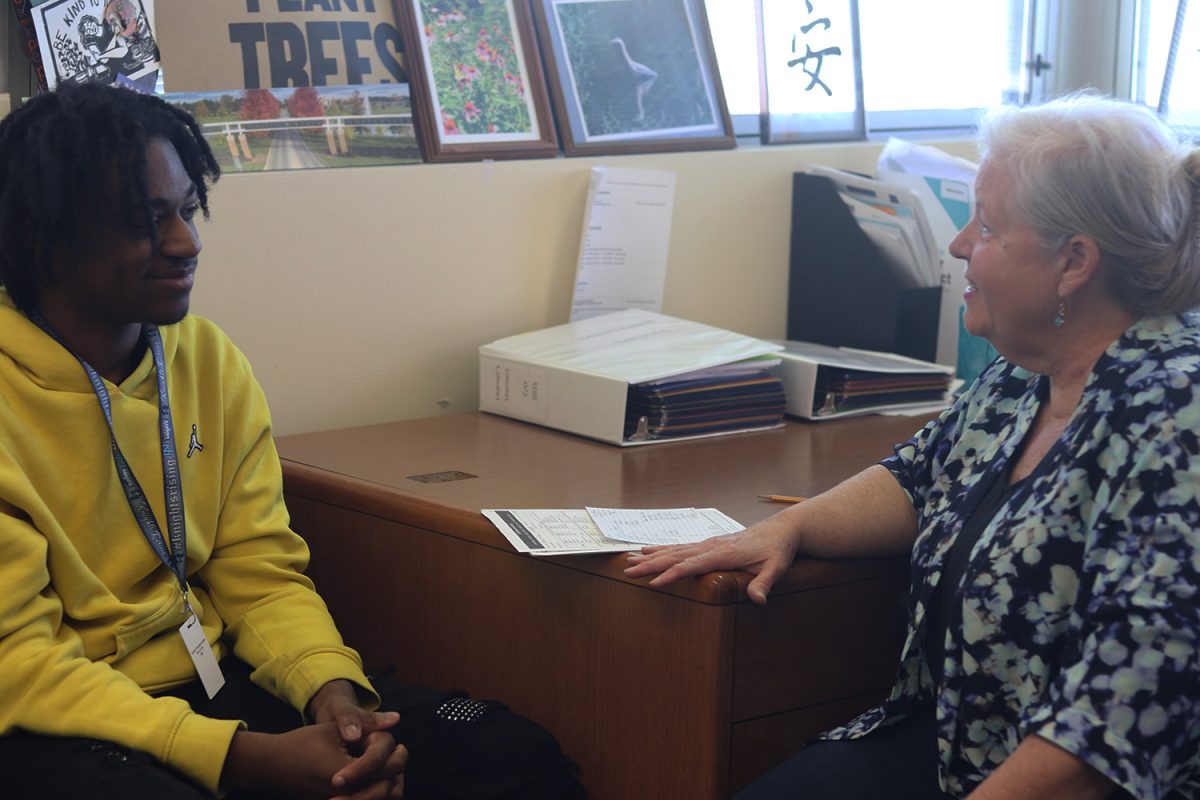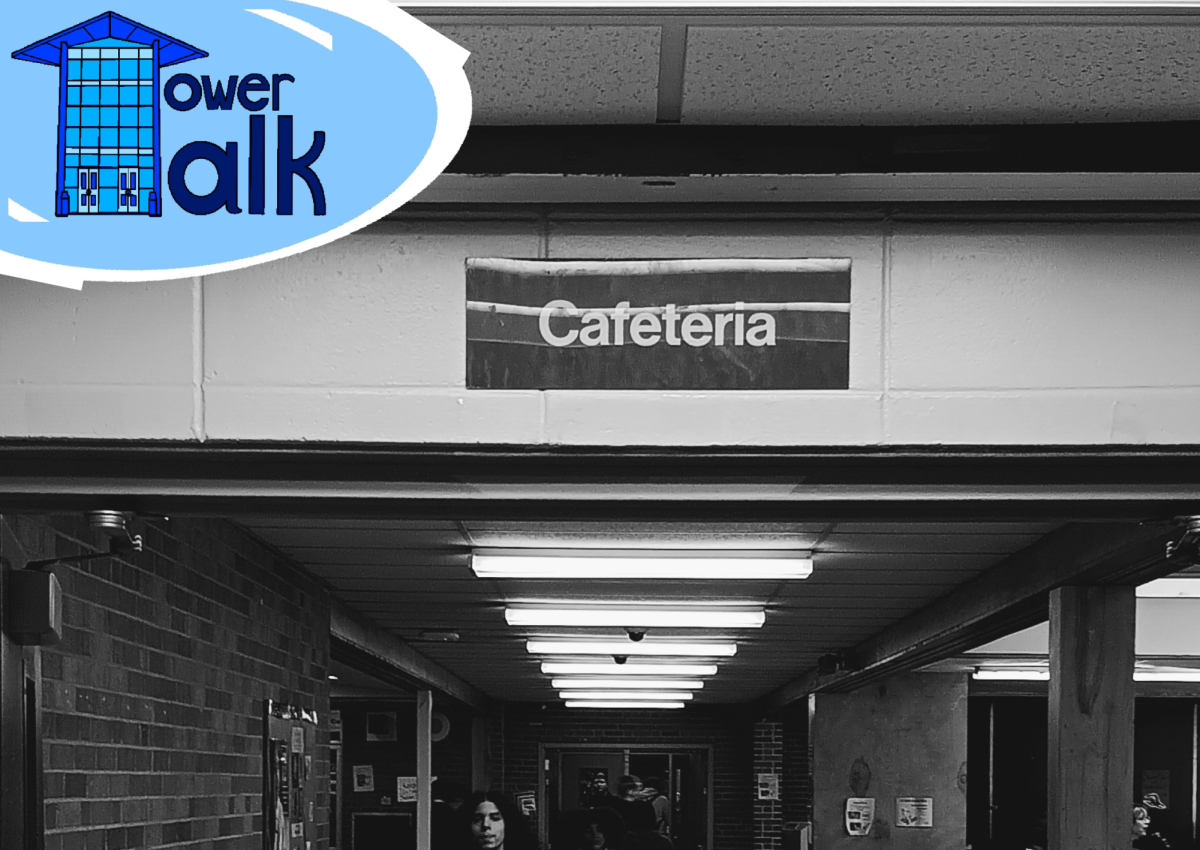Logging in and checking out: phones can distract teens and and cause mental health issues
Credit: Owen Quayle
Photo Illustration
March 21, 2023
“My mind is moving a mile a minute,” said senior Avery Johnson, after being without a phone for 5 hours.
Loy Norrix Spanish teacher Christina Holmes hosted an experiment to test the dependency her AP students’ have to their cell phones. It was one school day with no phone at all, and students had the option of 24 hours overnight for extra credit. Immediately, once announced, students experienced high levels of anxiety and verbally expressed their concerns.
When Wednesday, February 15th came, there were many mixed emotions on their new assignment. Some students went in with an open mind, and others were flooded with anxiety. The emotions that came along with the experiment were fairly mixed as well.
Junior Shiloh Shrader came in with a very nervous mindset towards the phoneless day, but she saw many potential benefits and decided to do the full 24 hours.
“Usually I don’t listen to anything my teacher says because it’s just so much talking, but today my attention was just so much better and I actually listened,” said Schrader.
Many other students expressed their experiences without their phones, and some students seemed to struggle more than others. Anger, stress and irritability were some common feelings amongst these students; however, some students said their ability to focus really improved.
Even without the distraction of their cell phones, many other students found that they had just lost their ability to get work done, and didn’t have the motivation to actually finish the work assigned. A feeling of laziness and procrastination was agreed upon, causing students to leave work unfinished.
“I do like the attention span increase. It freaks me out how bad my attention span is with my phone,” said junior Austin Thomas.
Recently, especially after the pandemic, the issue of cell phone usage has become very visible in high school classrooms. Cell phones pose as an immense distraction from classwork and teacher-led instruction. This distraction impacts many students’ learning capabilities inside and outside of school.
Research provided by the Harvard Graduate School says, “cell phones distract and negatively impact reaction times, performance, enjoyment of focal tasks, and cognitive capacity.”
These issues may seem miniscule at first sight, but they have a large impact on students’ learning capabilities in the classroom.
Cell phones don’t only affect students’ lives in school, they also pose a major distraction to teens all throughout their daily lives. These distractions come in the form of social media apps, they have good intentions: connecting people with ease and allowing them to share infinite content. Although, many underlying issues with these apps sneak under the noses of many teens.
Research repeatedly shows that these frequently used social media apps are highly addictive, especially to young adults and teens. The same apps fuel much bigger problems such as depression and even suicidal ideation.
Studies compiled by The National Library of Medicine say, the earlier age that social media use begins and is unregulated, the more likely depressive symptoms will arise. This issue has also been proven to be a bit more dramatic within teenage girls, due to the fact that insecurities are found more commonly within the demographic.
Senior Nina Molitor said “I think it just affects how I see myself [social media] and like what I put out on the internet. I want to be one of those girls obviously and put out my best self for everybody else to see.”
Another major issue driven by social media, are its effects on students’ attention span. The apps are designed to provide the brain with instant gratification in the form of dopamine which keeps teens hooked very easily. Becoming addicted to this source of dopamine and quick bursts of gratification makes the switch over to school very difficult. This is due to the fact that students have to focus their attention on something that may not be as interesting as their social media apps, but it is significantly more important.
Many teachers are dramatically seeing these effects in their students as well.
“There’s a sense of apathy and a reduction in stamina within students. In other words, if I go for more than two minutes then that’s pretty much all I can get before students tap back into their cell phones,” said Holmes.

From a one hundred person poll, it was found that 80% of people found their social media use to negatively impact their attention span. Even with minimal use, students said that there was a noticeable impact on their ability to focus.
“I can’t even focus on a movie,” said senior Naysa Quinones.
Although students see these negative effects, many still use their electronics and social media during class. This makes the students rely on their multitasking skills to learn.
A study displayed on The National Library of Medicine says that people highly inflate their ability to multitask, and this has little to no correlation to their actual abilities. People then tend to switch back and forth between tasks or leave one unfinished to finish another. The architecture of the brain doesn’t have the ability to focus on multiple tasks at once, so many issues arise when attempted.
The science behind multitasking is put in simple terms: the frontal lobe accesses and processes tasks and then assigns steps to complete these tasks. When multiple tasks are assigned, it then overloads the dorsal attention networks which have limited capacity to think, making multitasking at full capability impossible.
This being said, many Norrix students who are frequently tapping into their cell phones miss out on a significant amount of important learning. Many teachers don’t see too much of a solution for this problem.
Holmes puts it simply: “I just can’t compete with Tik Tok.”
Local middle school, Maple Street Magnet School, has found a very productive solution to this issue though. Implementing a new stricter phone policy, teachers are seeing a drastic improvement.
The Maple Street administration saw a large issue of students’ worsening attention spans and addictive tendencies after coming back from virtual learning in the 2021 to 2022 school year, and it was clear something needed to be done.
Second year Assistant Principal Erin Rolfe, also a former LN social studies teacher said, “Last year was pretty awful, I really reflected at the end of the year about how big of an influence cell phones were for our students. Which is the reason for the change.”
Needing change, Maple went into full force and created a new phone policy, “eliminating all the gray area” and focusing on making a consistent plan all throughout the building. All hours between 7:00 a.m. when students start to enter the building until 2:20 p.m. when the final bell rings, students are expected to have their phone silenced or off, out of sight in a binder or locker.
The policy leaves no gray area behind phone sightings or use. If a teacher sees a student using their cell phone, having it out, or sees any headphones or earbuds, they will ask to take the phone and have campus security come place it in the locked box in the office. Later on in the day, an administrator will log the daily phone confiscations and add them to an excel spreadsheet to log the students’ offenses.
After every three offenses, there will be a phone call home and a one day suspension. Some may think this is a very radical policy and it may be too strict, but Maple is focusing on keeping school culture focused on learning, not allowing devices to control students.
“It felt like at first it was going to be much bigger than it was, but after everybody got the same message they started to realize, ‘okay this is what’s going to happen,’” said Rolfe.
Immediately student phone usage drastically improved. Students were cooperating better than administrators even expected. A visible shift in the school’s culture was present, and students started to re-establish their focus in class.
“Even when students come down to the office, they often say that it made a difference, that it kind of takes the pressure off. They don’t have to look at their phone anymore, it sort of broke the habit,” said Rolfe.
With how successful this new phone policy was, it brings hope that schools aren’t doomed due to cell phone usage. Ensuring consistency with all teachers and classrooms throughout the school, keeping a phone policy isn’t hopeless.
Taking all things into consideration, enforcing decreased phone usage inside and outside of schools seems like a long shot. However it could possibly make a great impact on many teens’ lives, and it would help break many addictive tendencies in their day to day routines where teens are rapidly losing their lives within their cell phones.













